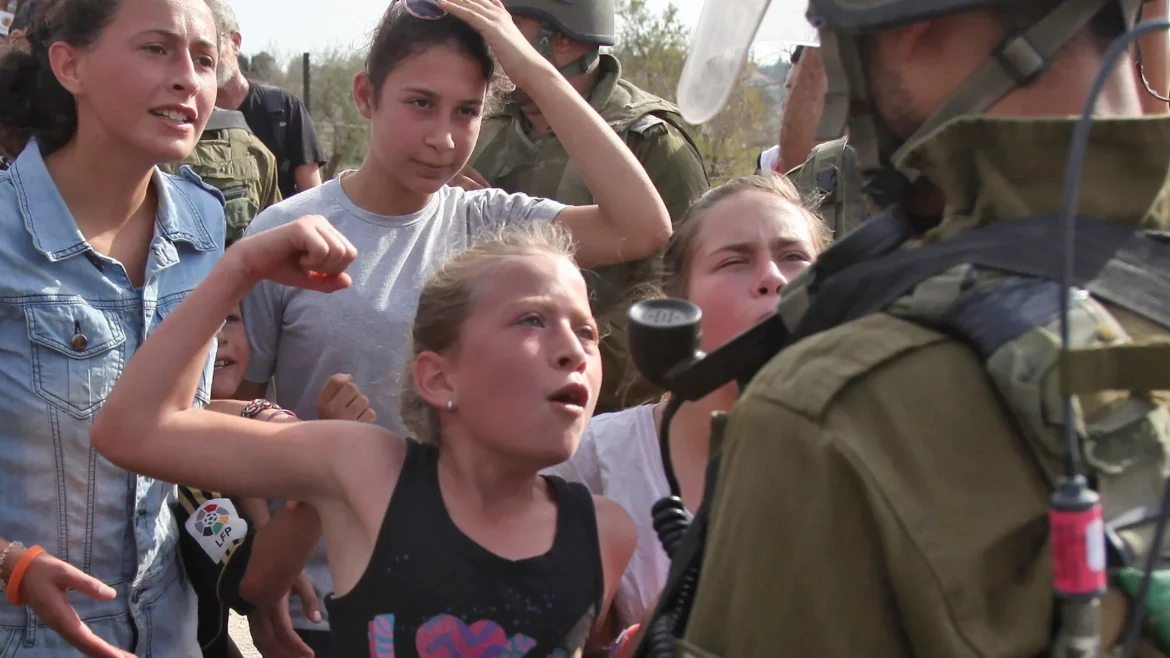It has long been hailed that “a picture is worth a thousand words” and in February this year, there was no finer example of this when the video of Ahed Tamimi from 2012 appeared on Tik-Tok. The video, which sees Tamimi a blonde-haired Palestinian girl standing up to an Israeli soldier, was wrongly circulated as an image of a Ukrainian girl confronting a Russian soldier. This fake news was quickly called out, but it did highlight the double standards towards sympathy and support to victims of war.

The video which went viral on TikTok with over 12 million views and accumulating over 800,000 likes highlighted not only how easily videos and images can be manipulated over the internet, but also how audiences can be misled and fall into the trap of believing fake news. Many aspects of the image should have made audiences question its reliability as being an image from Ukraine. The picture, seen above, shows Tamimi in a sleeveless top in “supposedly” the middle of February in Ukraine and she is heard speaking Arabic in the video. The fact that so many accepted the image as a scene from Ukraine, whilst all other images from the conflict, show the harsh winter scenes prompts a major question to reflect upon. Why do we blindly trust online images and videos?
The video of Tamimi began circulating on TikTok published by a random user account. Therefore, it is not as if the video began circulating from an authenticated verified account. That’s not to say that we should have blind trust in images that circulate from verified accounts, even verified news corporations, but even more so it does call to question the trust we seem to have in the imagery and videos we see online. In 2019, Kalev Leetaru wrote for Forbes that he believes “the single most important factor in the rise of visual misinformation, disinformation, fake news and foreign influence is our blind trust in the idea that ‘seeing is believing’ (Leetaru, 2019)”. The notion of ‘seeing is believing’ tends to make us think that if we see an image or video of an event, then we ourselves have witnessed it too. As Leetaru writes this assumption is often due to the way in which the public “typically see imagery and video as definitive third-party neutral documentation of an event” (Leetaru, 2019). This notion of “witnessing” events through videos is not something new, and many of us will have been affected and mobilised by such medium.
This belief in the authenticity of pictures and videos is problematic even without photoshop. As the example of Ahed Tamimi shows, an image with misleading content, fake context or false information can be shared rapidly and be central to spreading misinformation. What is hugely frustrating about the way in which the Tamimi video went viral is the way in which it also demonstrated how fake news can generate more interest than an original image or video. A reverse search of the image would have revealed the real context of the image and brought to attention who Ahed Tamimi is. The video was when Tamimi was waving a fist whilst confronting an Israeli soldier after her older brother was arrested. For many, Tamimi is a symbol of Palestinian resistance. When she was arrested and put on trial, many claimed that her case was a “rallying cry against Israel’s policy to detain hundreds of Palestinian children in jail” (Al Jazeera, 2018) because of her sentence to eight months in an Israeli prison as a minor. However, that reverse search would also have revealed that the commentary surrounding Tamimi, in the original footage, is not described in the same way in which it resurfaced as an image of Ukrainian resistance. Many took to twitter to suggest how “she’s no longer a terrorist when people think she’s white”. Shockingly, it is not the first time that Reuters have produced a fact check of pictures from Palestine which have gone viral after being misrepresented as images of Ukrainians standing up to Russian aggression (Reuters, 2022).
A picture of overnight explosions in urban areas seen with the caption “THE WAR STARTED IN UKRAINE” was actually an image showing the Israeli-Palestinian conflict in the Gaza Strip. Despite being fact-checked as fake, the post remains on Facebook. Facebook have added an information banner which states ‘partly false information’ but it remains online with 6.7 thousand likes, 690 comments and 3.7 thousand shares. Even with the banner, most of the comments are concerned with Ukraine and Russia. Such, it calls to question when images have been called out as fake or ‘misleading’ because of the misleading content, fake context, or false information, should they be able to remain online? Since it seems that even these banners do not lead all viewers to acknowledge the post as fake.
Pictures and videos go viral. After the death of George Floyd, we also see how media going viral has the power to shake up a system and to mobilise great numbers of individuals to call out injustices they ‘witness’ through viral videos. However, the example of Ahed Tamimi also goes to show the dangerous way in which media with misleading content, fake context, or false information can be shared rapidly and be central to spreading misinformation. The NY Times
(2020) recently separated those who consume news via social media into four categories. However, it seems as though we all need to be distrustful news sceptic when we first see a picture or video going viral. According to the NY Times (2020), the distrustful news sceptic has low trust in news online and high awareness of how one can be misinformed on the web. Thus, being hyper-alert to how an image might be used to push a particular agenda. We as viewers of this viral content need to become more confident and comfortable in distinguishing fake news!
Eleri Connick
References:
Leetaru, K. (2019). “Why do we trust online images and videos?”. Accessed:
Al Jazeera. (2018). “Ahed Tamimis trial gets under way behind closed doors”. Accessed: https://www.aljazeera.com/news/2018/2/13/ahed-tamimis-trial-gets-under-way-behind-closed-doors
NY Times. (2020). “How do people decide whether to trust a photo on social media” Accessed: https://open.nytimes.com/how-do-people-decide-whether-to-trust-a-photo-on-social-media-e0016b6080ae



